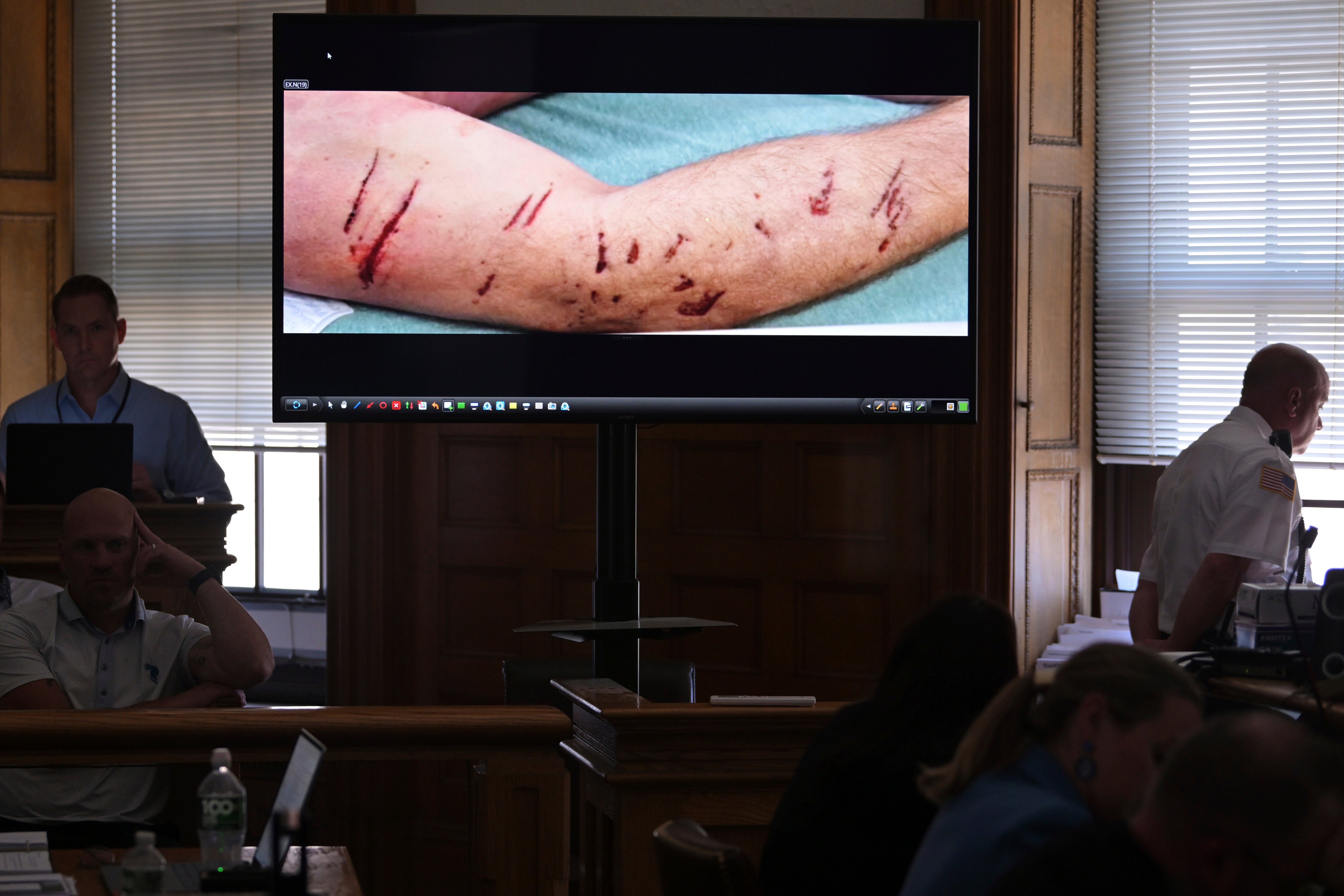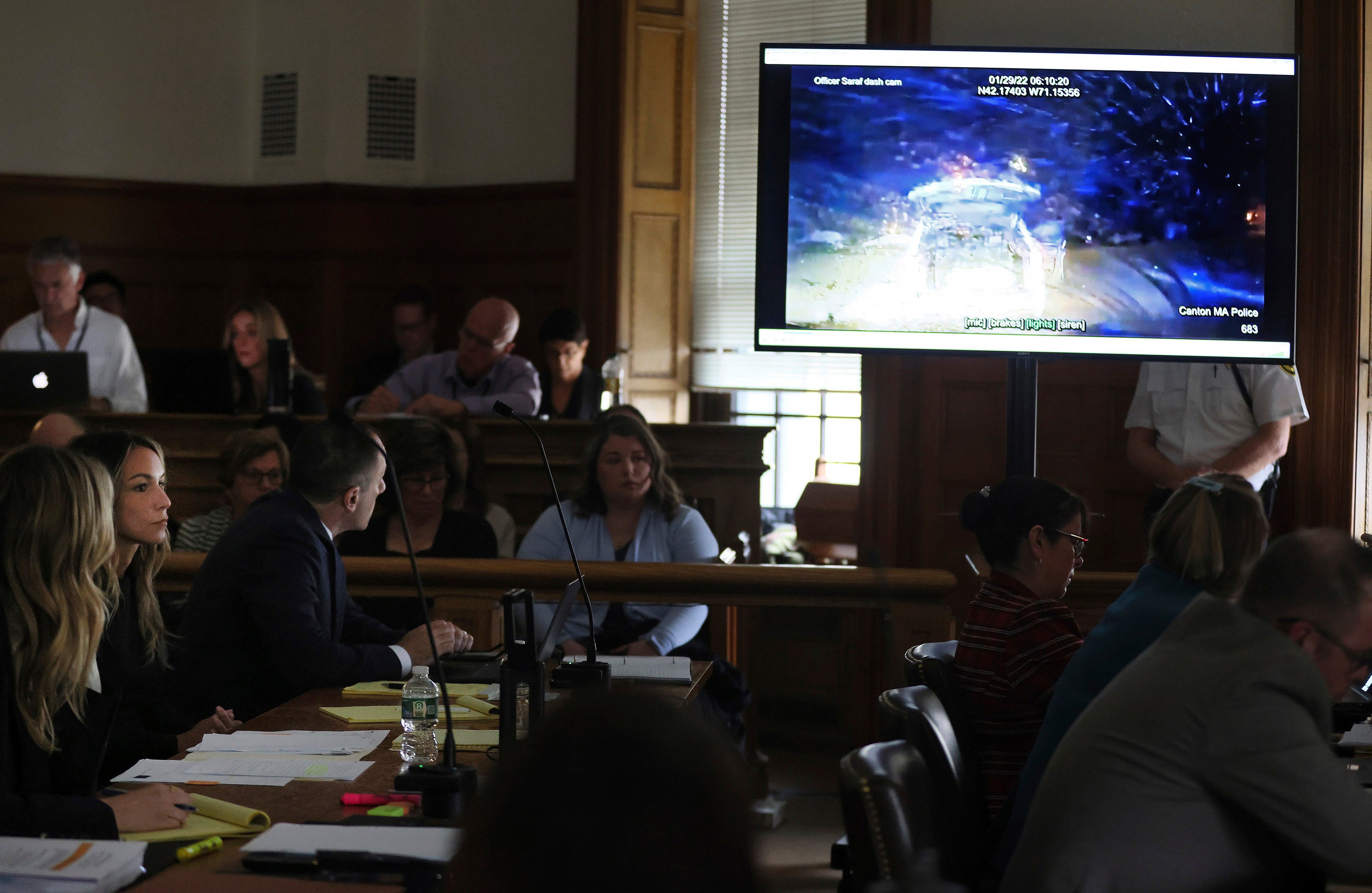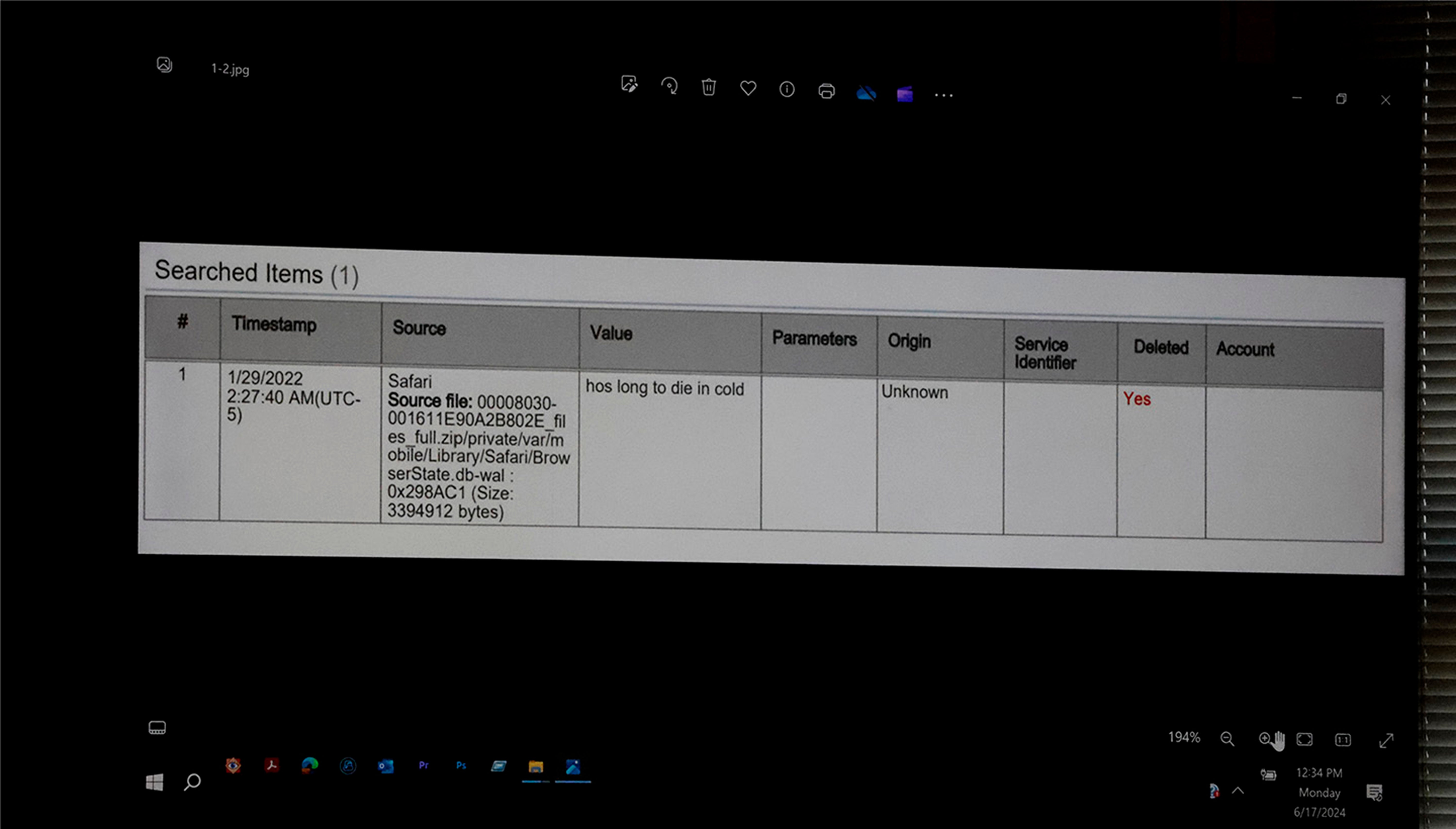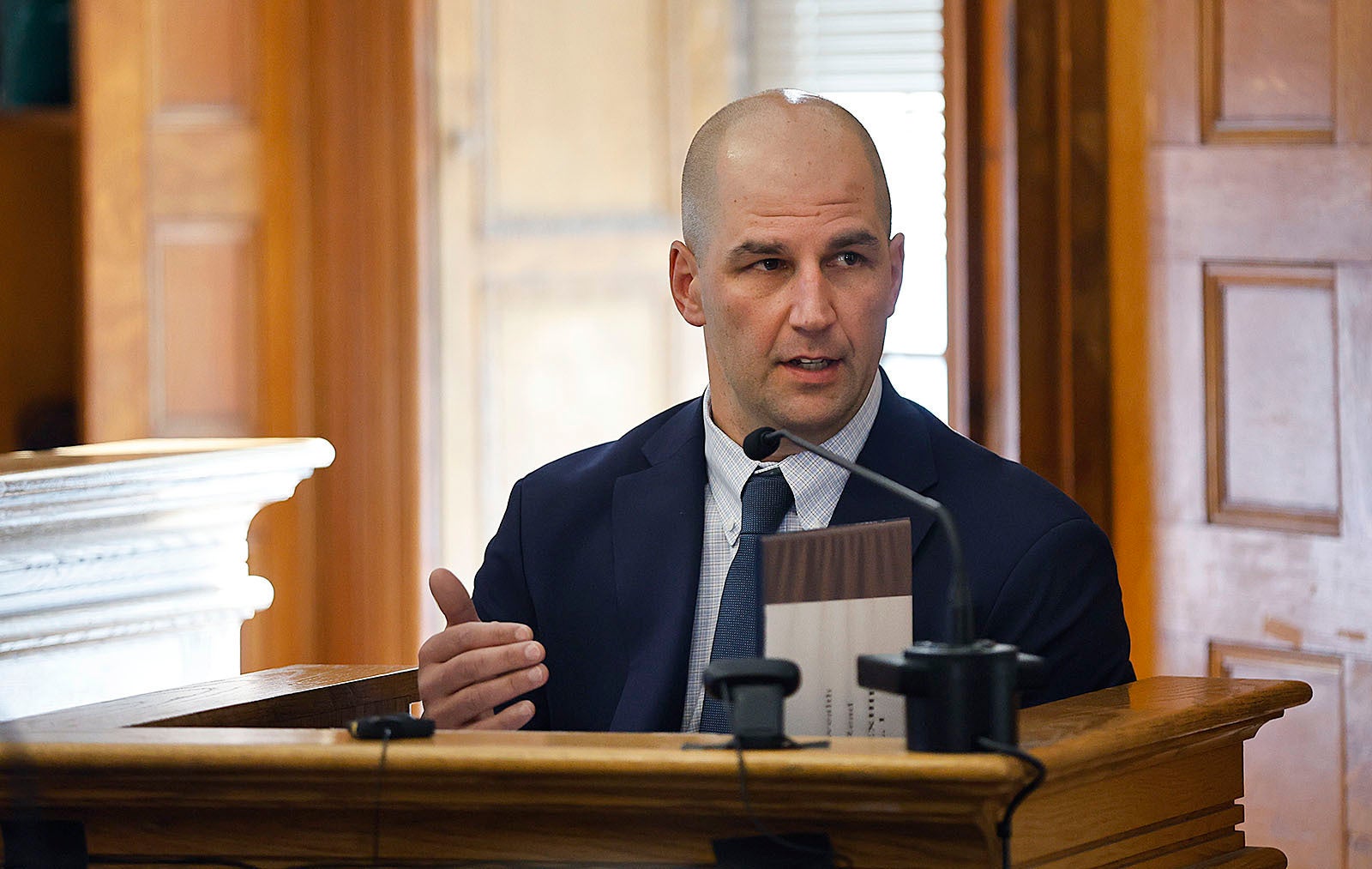Karen Read’s murder trial nears end as jury is set to determine if she killed he police officer boyfriend
Karen Read, 44, has pleaded not guilty to second-degree murder in the January 2022 death of her Boston police officer boyfriend, John O’Keefe, 46
The highly publicized trial of a woman accused of hitting her Boston police officer boyfriend with her Lexus SUV and leaving him for dead outside in a snowstorm is nearing an end.
If convicted, Karen Read, 44, faces up to life in prison for the death of 46-year-old John O’Keefe, who died in the Boston suburb of Canton, Massachusetts, in the early hours of January 29, 2022. An autopsy found he died of hypothermia and blunt force trauma.
Read’s trial began on April 16 in Massachusetts Superior Court, and the case is set to be in the hands of the jury within hours. It’s a case that has been surrounded by a media storm, underpinned by a distrust of police and fanned by crime bloggers.
After seven weeks of testimony, the defense rested on Monday. Read did not take the stand. Closing arguments will be held Tuesday before jurors begin their deliberations.

Prosecutors argue that in January 2022 Read dropped O’Keefe off at a house party hosted by a fellow officer after a night of drinking, struck him with her car while making a three-point turn and drove away.
She allegedly returned hours later to find O’Keefe’s snow-covered body in the front year and was heard repeatedly shouting “I hit him, I hit him” as first responders were on the scene, witnesses have testified.
But Read’s defense team argues she was framed by someone who beat O’Keefe to death at Brian Albert’s home in Canton, that he was bitten by the family do and left outside. They say the homeowner’s relationship with local and state police tainted their investigation.

The defense also argued investigators focused on Read because she was a “convenient outsider” who saved them from having to consider other suspects, including Albert and other law enforcement officers who were at the party.
Read is charged with second-degree murder, vehicular manslaughter while impaired and leaving the scene of an accident.
Defense expert says O’Keefe’s injuries were not consistent with being struck by Read’s Lexus SUV
The defense used the testimony of Dr. Frank Sheridan, to reinforce their theory about the dog, despite a lack of dog DNA evidence, and to suggest his injuries didn’t line up with being struck by Read’s Lexus SUV.
The former retired forensic pathologist testified Monday he would’ve expected more bruising if O’Keefe had been hit by such a heavy vehicle. He also suggested that scratch marks on his arm could’ve come from an animal, possibly a dog, and that other injuries were consistent with a fight.

Two witnesses from an independent consulting firm that conducts forensic engineering also suggested some of the evidence doesn’t line up with the prosecution version.
The defense called only a handful of witnesses over two days, but used its time in cross-examining prosecution witnesses to raise questions about the investigation, including conflicts of interest and sloppy police work.
Meanwhile, the prosecution, which rested on Friday, spent most of the two-month trial methodically presenting evidence from the scene.
Prosecutors say scene evidence points to Read
Massachusetts State Trooper Michael Proctor, the lead investigator in the case, and Sgt. Yuriy Bukhenik detailed in court how they discovered pieces of red and clear plastic at the scene that came from Read’s broken taillight.
Prosecutors say Read broke her taillight when she backed into O’Keefe, and showed the court photos of the pieces of red plastic in the snow and showed evidence bags which contained the pieces of plastic.
The defense, however, argued Read broke her right taillight while backing out of her garage and hitting O’Keefe’s vehicle.

After viewing footage from O’Keefe’s home security camera that shows Read backing out of the garage, Bukhenik acknowledged the video appears to show the back tire of O’Keefe’s vehicle shake slightly as the SUV backs up toward it.
But he testified that O’Keefe’s vehicle was not damaged and that nothing was found near his vehicle. Proctor also testified he saw no damage on O’Keefe’s vehicle nor to the garage door.
Trooper Joseph Paul testified an analysis of safety system data from Read’s SUV indicated her vehicle slowed in reverse at the time of the incident — going from 24.2 mph to 23.6 mph - and that it was consistent with a “pedestrian strike,” he said, adding O’Keefe’s injuries were also consistent with being struck by a vehicle.
‘How long to die in cold’
Jennifer McCabe, a friend of the couple and Albert’s sister-in-law, testified that soon after O’Keefe’s body was found, Read screamed, “I hit him! I hit him! I hit him!” and frantically asked her to conduct a Google search on how long it takes for someone to die of hypothermia.
But Read’s attorney showed jurors cell phone data during the trial that suggested McCabe also did an internet search for variations of “how long to die in cold” four hours earlier.
“You made that search at 2:27 am because you knew that John O’Keefe was outside on your sister’s lawn dying in the cold, didn’t you?” defense attorney Alan Jackson asked McCabe.
“Did you delete that search because you knew you would be implicated in John O’Keefe’s death if that search was found on your phone?”

“I did not delete that search. I never made that search,” McCabe said. “I never would have left John O’Keefe out in the cold to die because he was my friend that I loved.”
Jackson suggested McCabe changed her story after experiencing what she has described as “vicious” harassment from Read’s supporters.
McCabe acknowledged she first used those words under oath in June but insisted she also had told an investigator the same thing in the days after O’Keefe’s death.
Top investigator questioned over inappropriate texts
During cross-examination, Proctor answered questions from the defense about the offensive and inappropriate texts he allegedly wrote about Read during the investigation.
Proctor acknowledged that he called Read several names, including “wack job,” in texts to friends, family and fellow troopers.

He also admitted he joked to supervisors about not finding nude photos while searching her phone and texting his sister that he wished Read would “kill herself,” which he claimed was a figure of speech and that “emotions got the best of me.”
Proctor repeatedly apologized in court for the language used in the text exchanges, saying that the “juvenile, unprofessional comments had zero impact on the facts and evidence and integrity of the investigation.”
Defense argues investigation was marred by conflict of interest
The defense described the police investigation as shoddy and claimed it was undermined by the relationship investigators had with the law enforcement agents at the house party.
Proctor admitted he is friends with the brother of Brian Albert and his wife — though he insisted it had no influence on the investigation and that he had never been to their house before O’Keefe’s death.
His text exchanges could also distract from evidence he and other state troopers found at the crime scene, including pieces of a clear and red plastic found at the scene in the days and weeks after O’Keefe’s death. The defense have suggested pieces of glass found on the bumper of Read’s SUV and a hair found on the vehicle’s exterior may have been planted.

On cross-examination, defense attorney Jackson got Proctor to acknowledge that he was drinking buddies with Albert’s brother, Kevin Albert, who is a Canton police officer.
He acknowledged they went out drinking several months after O’Keefe died, worked on a cold case together and communicated about coordinating aspects of the O’Keefe case even though the Canton Police Department recused itself from the case.
That testimony bolstered a defense argument that a myriad of relationships among investigators, witnesses and those at the house party biased the investigation and blinded state and local law enforcement officials to the possibility that someone else killed O’Keefe.
Subscribe to Independent Premium to bookmark this article
Want to bookmark your favourite articles and stories to read or reference later? Start your Independent Premium subscription today.

